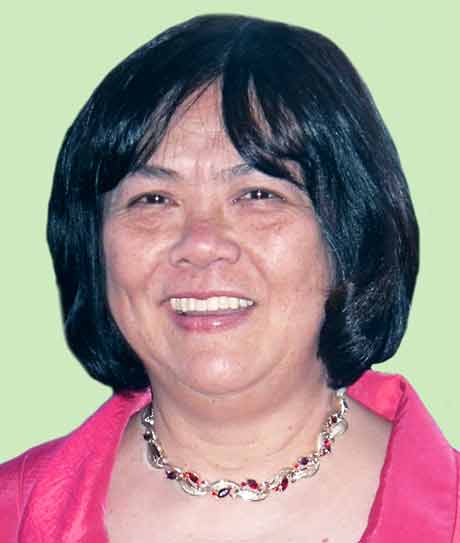Book Review
Peepal Tree Press, 2010, pp.94. ISBN 13: 97818452231514


A review by Frank Birbalsingh
The narrator of Chinese Women - Albert Aziz - is an Indian Muslim who, like the author, is born in 1947. But Albert grows up on a sugar estate in Demerara, although his father works as field overseer in an unnamed sugar estate in Berbice probably based on the author's memories of Rosehall. In any case, never before in her fiction, nor seldom elsewhere, is there another description of a Guyanese sugar estate more chilling than the one given by Albert: "The sugar estate gave me the feeling that very little divided beast and man. Both laboured, copulated, procreated and died exposed to the elements: in the mud, rain and canals, at the mercy of alligators, snakes, rats, vultures, mosquitoes and flies that sucked their blood and ate their flesh... You could see faeces floating in the canals and ditches where children played and people copulated. They even drank the same water they shat in." This dark, nightmarish vision was probably embedded in the author's consciousness from childhood without her being able to find the right words to fully express it. Now, after a lifetime's thought and reflection lavished on three works of fiction, she finds simple but powerful words that finally exorcise her inhibition and proclaim the stark, unvarnished truth of British colonial exploitation on Guyanese sugar plantations.
In the 1950s most Guyanese sugar estates were owned by the British company Bookers, notorious for their apartheid practice of hiring only white administrative staff to supervise workers who were chiefly Indian. By the late 1950s, a liberal shift in company policy permitted Albert's father to be hired, and his family accommodated in the same housing quarters as white staff. By seeing how whites live from the inside, Albert is able to give a fuller report on the scale of human exploitation on sugar estates: "the horrible daily spectacle of human misery." Even after his family lived alongside whites for some time, he still detects: "the culture of surveillance where we had to pass through unwritten tests set by the overseers before we were allowed to live with them."
But the inhumanity of British colonial exploitation is only one aspect of the novel's more personal subject – Albert's life story – which appears in three parts, each outlined in one of three sections of Chinese Women. The first section reveals the calamity of Albert's accident at the age of ten when he falls from a genip tree and breaks all the major joints in his body. Recovery comes after three years of therapy and specially devoted care by Dr. Webster, an Englishman. Albert leaves for Canada in 1974, going on to study engineering and become a millionaire by 2000 when he sells his: "first nuclear centrifuge design in the Middle East for a million US dollars."
Despite such success, Albert still squirms under the derogatory label he carries from Guyana where, as an Indian Muslim, he was defined as a Fulaman, or worse, as a Fula coolie, because of the low social status assigned to Indian-Guyanese sugar estate workers. Only at the end of the novel, after detaching himself from Guyana, Canada and the West to become an Arab Muslim does Albert discover self-respect and dignity: "As an Arab Muslim, which I am now, I would never be called a Fulaman again." This is partly why the novel ends with Albert deciding to leave his apartment in Calgary, Canada, to live in the Middle East to: "do the work of a Muslim, helping to build the nuclear programme that would lead to the destruction of Israel."
Another reason for Albert's decision is his "relationship" with the two Chinese women of the novel's title. The first, Anne Carrera, is an overseer's wife and neighbour during Albert's adolescence. Albert is totally fixated on her until he realises that she belongs to the dominant white group, although her husband may be Portuguese rather than white, and she herself may be mixed and only half Chinese. Albert has an even greater obsession with Alice Wong, who was a Chinese fellow student in his school days but from whom he is separated for more than forty years until he turns up in London where she lives, in 2006, and ardently courts her at the age of sixty. But despite showering her with extravagant offers of money and gifts, she rejects him and he realises that: "Though I was a millionaire, I was still the coolie looking in from outside on the lives of white people." This is when Albert becomes convinced that his future lies with his Arab Muslim brethren in the Middle East.
Perhaps Albert's decision to throw in his lot with Arabs agitating for justice in a post-9/11 world may at first seem far-fetched. Yet the surprising brevity of Chinese Women, only 94 pages, and its potent language, seen earlier in its description of a typical Guyanese sugar estate during colonial times, suggest confidence and an almost prophetic air that, in this era pregnant with emergence of an Arab spring and signs of American decline, may well hint at apocalyptic change to come.
Meanwhile, true to her mixed ethnic and cultural inheritance, Shinebourne grounds her novel firmly in history when she documents the exploitation and humiliation visited on Guyana by European empires, British as well as Dutch, and the resilience of victims, not only Albert who rises phoenix-like out of ashes, but the Chinese described as "the most tenacious of all the ethnic groups."